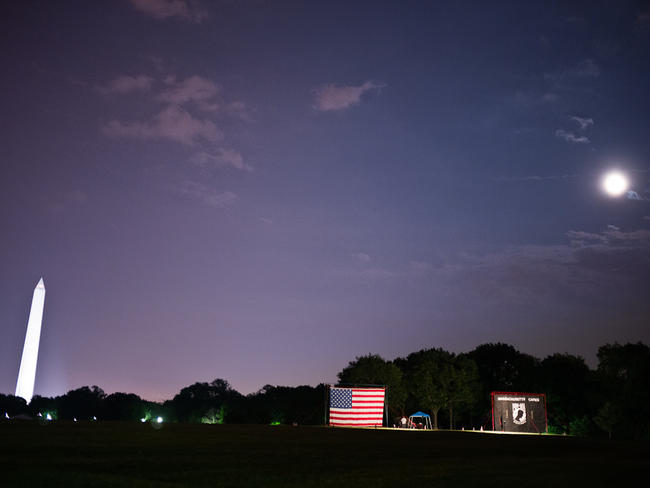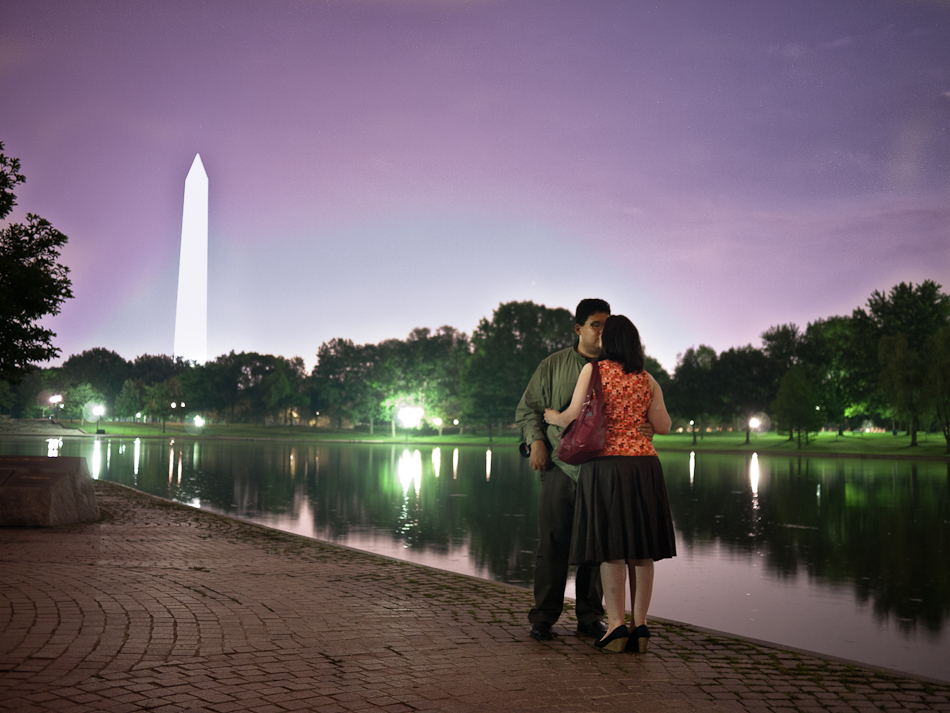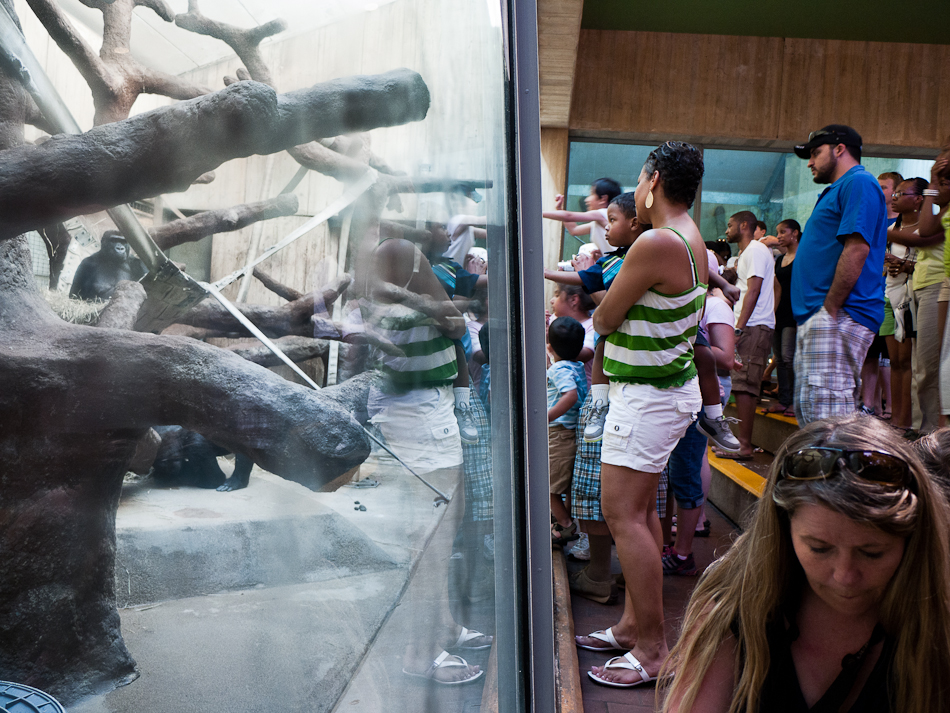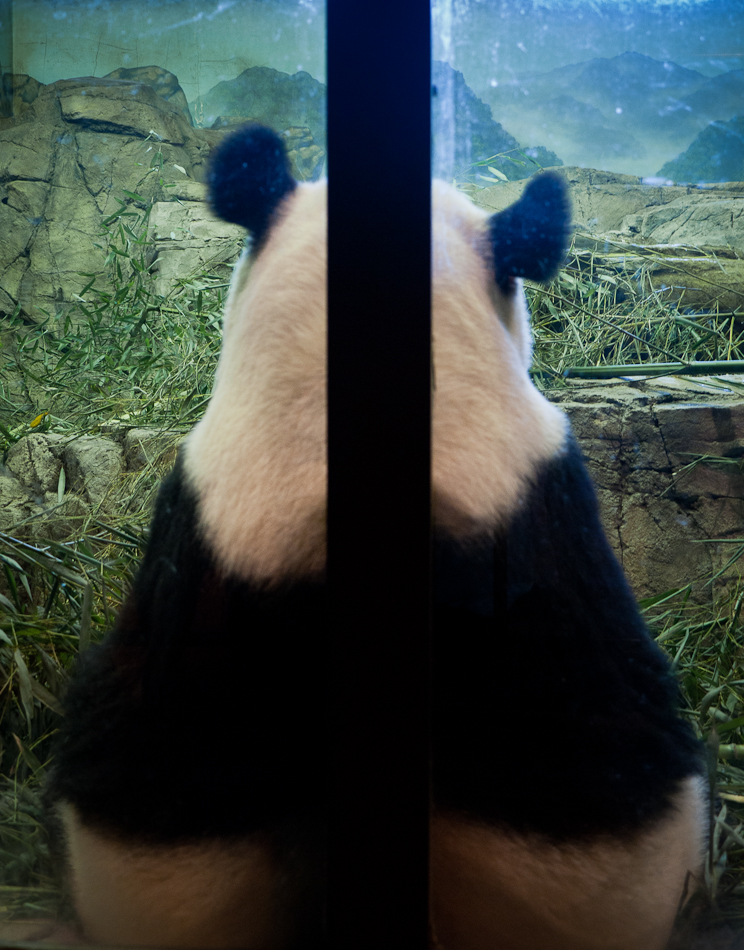(Updates are coming in few and far between again, thanks largely to Real Life™ taking up a lot of my time, but hopefully this six-image update will help make up for my tardiness)
Just before the weekend, Scott Kelby—photo guru, Photoshop whiz extraordinaire, and all-around swell fella—posed a photo challenge: spend the weekend shooting like it was 1999. In a nutshell, go out and shoot with your digital camera like it was a film camera: no reviewing shots on the LCD, no more than 24 or 36 shots for the whole weekend, no looking at any of the shots until the day after you “finish the roll.” For extra credit, I kept it on one ISO (400) for the duration of the roll, though I did run some post-processing on them in Lightroom (while it may be nice to pretend I’m shooting with film, digital is decidedly not film and PP helps compensate for the shortcomings).
As luck would have it, I had just that morning decided to leave behind my d700 and gear for my weekend trip down to DC, bringing with me only my Panasonic GF1 (and second lens). Normally I’d have a small entourage of lenses and strobes and accessories and tripods with me, but I had bought my GF1 specifically for the purposes of daily use and light travel and figured now was as good a time as any to start.
For the most part the challenge went fairly well. I did wind up overdoing it (or underdoing it, depending on how you look at things) a little, and walked away from the weekend with only eight exposures. Barely enough to fill a 12-roll, let alone a 36 (and to think, I had originally thought I might need to shoot 72 exposures). I suspect the knowledge that I had a finite number of shots made me a little too selective on what I photographed, to the point of being stingy. Though I have to admit there was a sense of freedom brought about by my limitations that I found oddly liberating, if somewhat ironic. Knowing that I only had a finite number of exposures to use made it easier to forgo some shots that I might have felt compelled to take otherwise. And the few times that I did shoot a scene, I took one exposure instead of the usual half-dozen or so.
On top of being required to put thought into every shot I took, knowing that I wouldn’t be able to immediately review my shots forced me to spend extra time making sure everything was set up perfectly. I shot solely on full manual, spot metered most of the shots, manually focused a surprising number of them, and double-checked my settings a good many times before making the exposure. After all, I only got one chance; I had to make it count.
In the end, I think it was well worth it. Though I only walked away with eight exposures, six of them were keepers. That 80% acceptance rate is higher than any I’ve ever had when shooting willy-nilly with my d700. And I was happier still when it came time to process the photos and I only had six to work on instead of six hundred. More often than not, I find myself taking photos just for the sake of taking them. I’m there, the scene’s there, my camera’s there, may as well fire off twenty shots. It’s almost like the photographic equivalent of walking into a kitchen because you’re bored and then making a triple-decker roast beef sandwich because, hey—you’re already in the kitchen and there’s all that food there, so why not?
And then I wonder why, a week later, I find myself five pounds heavier and a good thousand photos behind on my workload.
My tendency to “photo gorge” was most apparent the next day, when we visited the National Zoo. Due to the fact that my longest lens was a 90mm f/5.6, I didn’t bother going for many animal shots; it just wouldn’t do them justice. And looking back, I realize how happy I am for it. If I’d had my d700 and a good long lens with me, I have no doubt I would’ve spent the entire afternoon photographing lions and tigers and gorillas (oh my) because, hey—why not? And then, when I finally got back to my computer at the end of the day, I’d have a few hundred images of animals that I really didn’t care about. Which isn’t to say they wouldn’t have been decent shots, just that I would have taken them more because I felt compelled to and less because I truly wanted to.
If nothing else, Scott’s challenge forced me to put a little more thought and prudence into what I shoot; to focus more on the photographs I care about than the ones that are convenient. Just because I can, after all, does not necessarily mean I should. Hopefully it’s a lesson I’ll manage to keep with me during my day-to-day shooting as well as the jobs I work on. While I always try to approach each shot with the question “Is this a shot I want to take?” now I’ll have a new question to ask myself:
If I could only take 24 shots today, would this be one of them?






Thanks for the insight, you have really made me think whether my approach is right or not.
Because I am new to the whole digital photography thing I have been loving the fact that I can just snap away without worrying about the cost of film, processing etc. This in turn has made me take several shots of the same scene trying different settings etc. in the hope I get one right when I get back to the computer. As I have just taken the step of starting to shoot everything in RAW I now have a backlog of photo’s to try and sort through and (try to) process (I’m just starting to learn Lightroom as well!!). Maybe I should just accept that I will miss some shots at the moment but spend more time trying to get it right 1st time and this might help me learn better as I would be concentrating more.
PS. I love the shot with the couple kissing, a beautiful scene with such wonderful colours. I hope you don’t mind me asking, did you do much pp to it and if so what? (I’m trying to understand how I might be able to get such great results (in maybe 10 or 20 years the way my results are turning out at the moment LOL))
Hi Henry –
As luck would have it, I actually have the Before and After pics up on my Flickr account (http://www.flickr.com/photos/83558816@N00/sets/72157624174159316/). I shoot RAW+JPG on my GF1, and I had uploaded the JPGs before eventually processing the RAWs and uploading those. For the most part, my post- on this photo consisted of dropping down the exposure and brightness a little, and increasing the blacks / playing with curves for contrast. I also upped the saturation a little bit, to help the colors pop.
I feel your pain with the photo backlog. One of the photo sets I’ve been dragging my feet on is from a concert where I took around 700+ photos. And it’d have been one thing if the concert had varied considerably from minute to minute, but for the most part it was just the same guys singing songs onstage, shot from the same angle. I would’ve been more than fine with a couple dozen shots, but for some reason I felt compelled to keep shooting as the concert went on. And while I’ll no doubt wind up with a better final selection of images than I would’ve if I’d only taken 20+ shots instead of 700+, I can’t help but wonder if it’s worth it in the end if I wind up taking so long to get to working on the shots.
Haha, this is one of the things that keeps bringing me back and back and back to film photography, actually. Every once in a while I go out and get some of my favorite images on my digital camera, obviously, but the sport and deliberation of the shot and the thrill of getting my film back is just something completely different. Also, when I only have 12 shots, so many more of them really count! I think that limitation has really helped me a lot as I’ve learned my way around the frame. I certainly know how it is to walk away from a day with 8 of 12 frames shot because I was too stingy though 🙂
Ps I really like how monument turned out.
Thanks! Funnily enough, I threw in some LR3 grain on that to give it a more film-like look. 🙂
I had a short rekindling of my love affair with film a year or so ago, when I went back to shooting medium for a while. I actually enjoyed it, but developing my rolls and scanning the negatives was such a time-consuming process that I eventually found myself shooting less and less of it.
One thing I’m planning on carrying over from this challenge/experiment is to keep the “Auto LCD Review” feature turned off on all my cameras. I’ll still be able to check images if needed, but by having the auto-review turned off will go a long way to curbing my tendency to chimp from time to time.